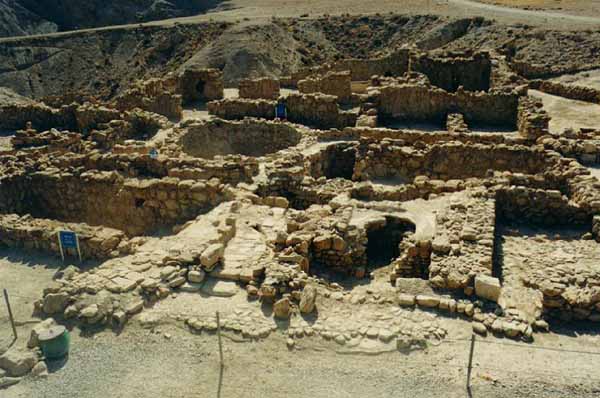|
Other Archaeological Sites / The Neolithic of the Levant (500 Page Book Online)
Understanding the Dead Sea Scrolls: A Reader From
Chapter 6: Essene Origins -- Palestine or Babylonia
Excerpts and Definitions and Addendums:
In the Palestine-origin theory the Essene movement was a reaction against the Hellenization of Palestinian Judaism. This process of Hellenization began almost imperceptibly in the third century B.C. In the first part of the second century B.C. however the forces of Hellenization gained new ground both culturally and politically. Then in 172 B.C. Onias III -- the legitimate High Priest -- was murdered in Jerusalem: Onias was a Zadokite or a priest who was descended from Zadok (the high priest of King David and and originator of the line of High Priests of the Temple in Jerusalem). Instead of Onias the Syrian overlords appointed Meneleus -- a highly Hellenized Jew who was not of the Zadokite line. To many of the faithful Meneleus could only be a usurper ... Matters were made still worse by the increasingly forced Hellenization and religious oppression of the Syrian overlord King Antiochus IV. In 165 B.C. Judea finally revolted. Under the brilliant military leadership of Judas Maccabeus the revolt was successful and an independent Jewish state was once again established. Thus began the Hasmonean [Dynasty] of Jewish kings -- first Judas himself (165-160) -- then his brother Jonathan (160-143) and lastly his brother Simon (143-134) ... As matters turned out the Hasmoneans brought not a return to orthodoxy but increased Hellenization. Even Judas himself signed a treaty of friendship with the Roman Senate and employed partly Hellenized Jews as his ambassadors. Finally in 152 B.C. Jonathan had himself appointed High Priest -- another usurpation; for many Jews this act was a great provocation and the strongest reason for abhorring the Hasmoneans ... According to the Palestinian theory of Essene origins it was in this atmosphere that the Essene movement began. [Those] Jews (1)disgusted with what they believed to be the pollution of their ancestral religion and (2)revolted by the usurpation of the High Priesthood by a non-Zadokite rallied behind a man they called Moreh Tzedek (Teacher of Righteousness). No doubt he was of the Zadokite line and a legitimate claimant to the title of High Priest ... The faithful retreated to the desert to (1)live a life of ritual purity (2)observe the ancient law (3)follow the old calendar that marked the holy times and (4)await the day when the Teacher of Righteousness would be accepted by all Jews as High Priest and would [thence] return once again to Jerusalem. This is the Palestinian theory of Essene origins ...
Much of the support of this Babylonian-origin theory comes from the Damascus Document -- especially its historical allusions. The document (1)alludes to leaving the land of Judah and going to the land of the north (Damascus) and that (2)the Essene movement had been in existence long before the Teacher of Righteousness had appeared on the scene. The conclusion arrived at in this theory is that the Damascus Document was originally written by Jews living in the Diaspora -- in this case the Babylonian Exile ... |

